大家好
如何使用
目录:教程和实例
介绍
What Is the MATLAB Serial Port Interface? 什么是MATLAB串口接口
Supported Serial Port Interface Standards 支持的串口标准
Supported Platforms 支持的平台
Using the Examples with Your Device 使用你的设备的例程
串口总览
1.介绍
2什么是串口通信
3串口通信标准
4用串口线连接两个设备
5串口信号和针脚分布
Signal States
The Data Pins
The Control Pins
6串口数据格式
7为你的平台找到串口的信息
8使用虚拟USB-串口 转接器
9参考书目
开始串口工作
Example: Getting Started 例程:开始
The Serial Port Session 串口对象会话
Configuring and Returning Properties 配置和返回属性
建立一个串口对象
1.串口对象概览
连接设备
配置通讯参数
读写数据
Before You Begin 开始之前
Example — Introduction to Writing and Reading Data 读写数据例程
Controlling Access to the MATLAB Command Line 对MATLAB命令行的访问控制
Writing Data 写数据
Reading Data 读数据
Example — Writing and Reading Text Data 例程:写读文字数据
Example — Parsing Input Data Using textscan 用textscan解析输入数据
Example — Reading Binary Data 读二进制数据
事件和回调用
Introduction 介绍
Example — Introduction to Events and Callbacks 例程,事件和回调介绍
Event Types and Callback Properties 事件类型和回调属性
Break-Interrupt Event 断裂中断事件
Bytes-Available Event 字节可用事件
Error Event 错误事件
Output-Empty Event 空输出事件
当输出缓存被清空时,空输出事件发生。
Pin Status Event 针脚状态事件
Timer Event 时间事件
Responding To Event Information 事件信息的回馈
The AbsTime Field
The Pin Field
The PinValue Field
The Message Field
Creating and Executing Callback Functions 建立和执行回调函数
Enabling Callback Functions After They Error 错误发生后重新使能回调函数
Example — Using Events and Callbacks 例程,使用事件和回调
使用控制针脚
Properties of Serial Port Control Pins 串口控制指针的属性
Signaling the Presence of Connected Devices 存在连接设备的信号
Controlling the Flow of Data: Handshaking 控制数据流:握手
调试:将信息记录在磁盘上
Introduction 介绍
Recording Properties 记录属性
Example: Introduction to Recording Information 例程:记录信息的介绍
Creating Multiple Record Files 建立多个记录文件
Specifying a Filename 分配文件名
The Record File Format 记录文件的格式
保存和装载
Using save and load 使用保存和装载
Using Serial Port Objects on Different Platforms 在不同平台上使用串口对象
断开和清空
Disconnecting a Serial Port Object 断开串口对象连接
Cleaning Up the MATLAB Environment 清空MATLAB环境
属性参考
The Property Reference Page Format 属性参考页格式
Serial Port Object Properties 串口对象属性
属性 – 按字母表排序
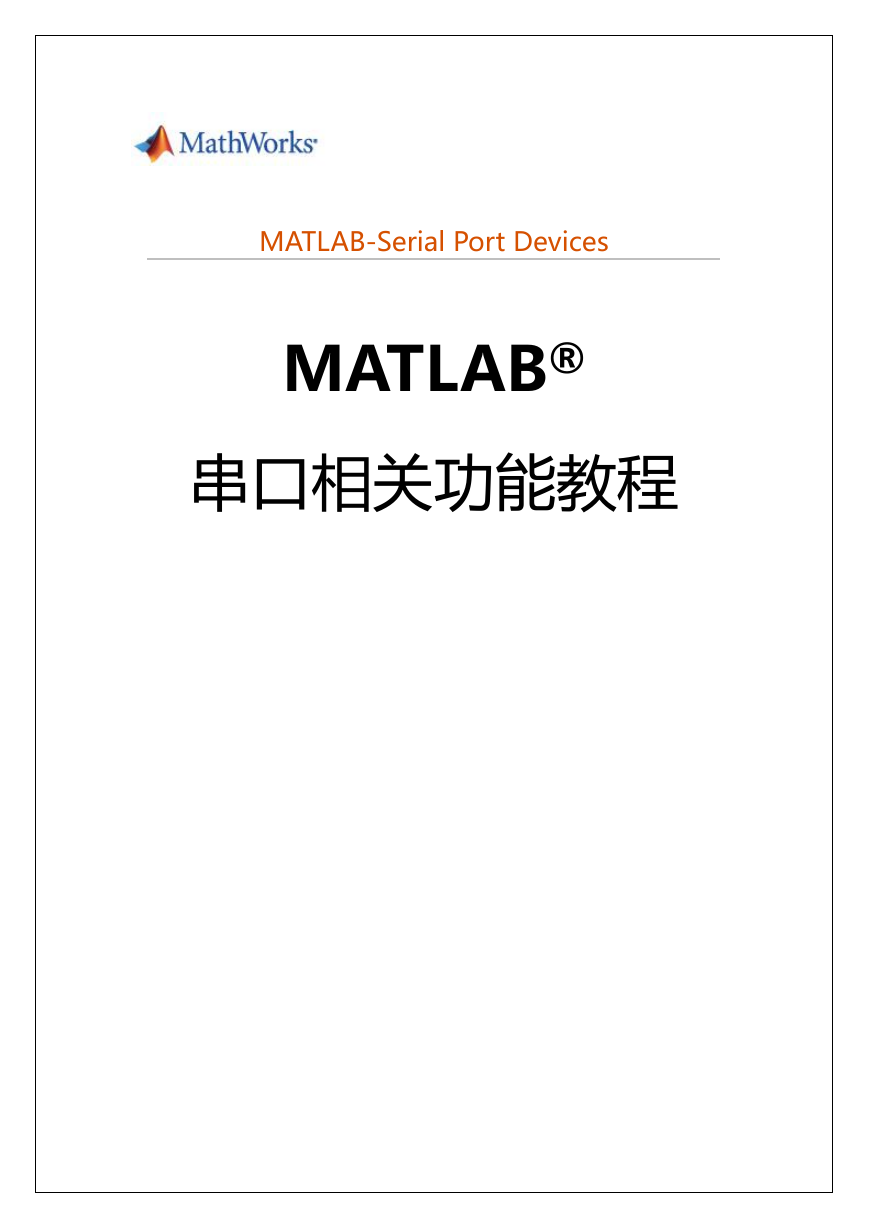

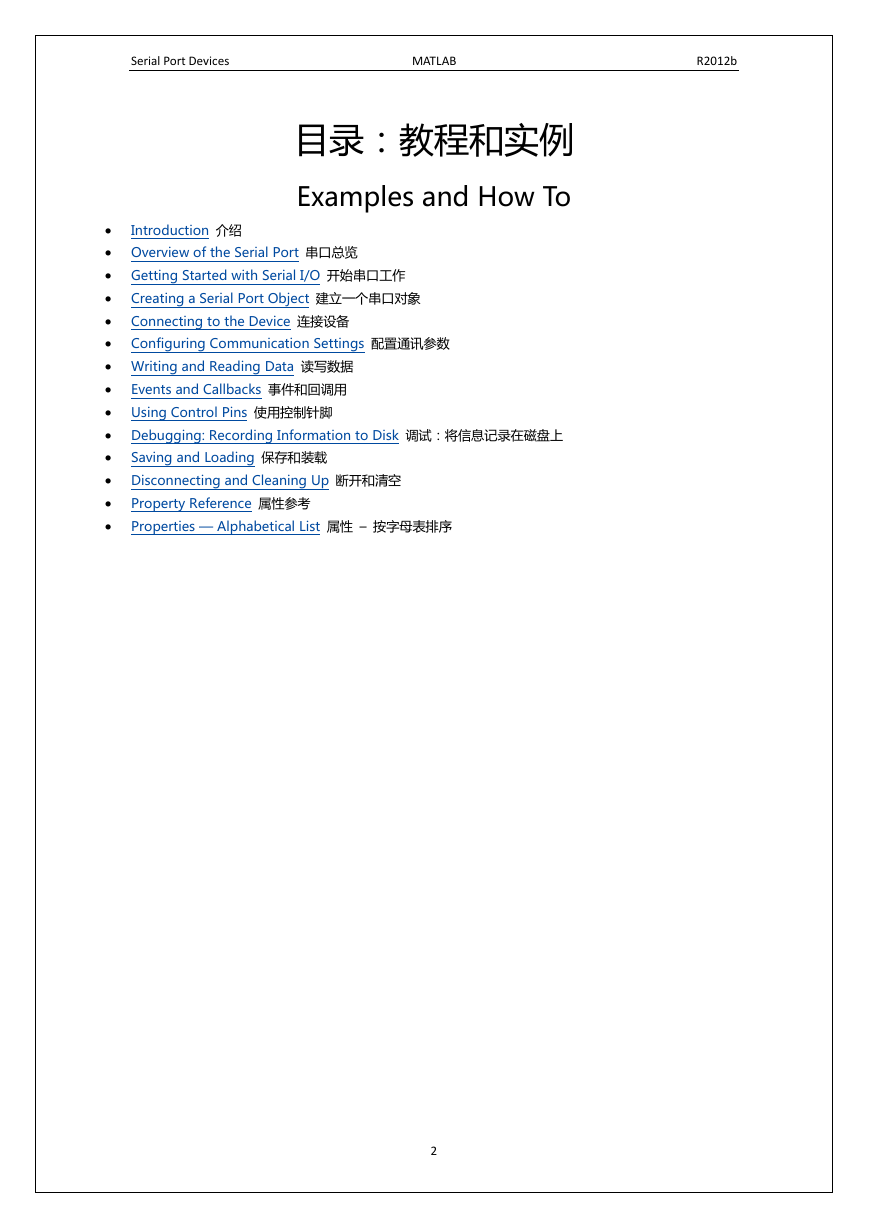
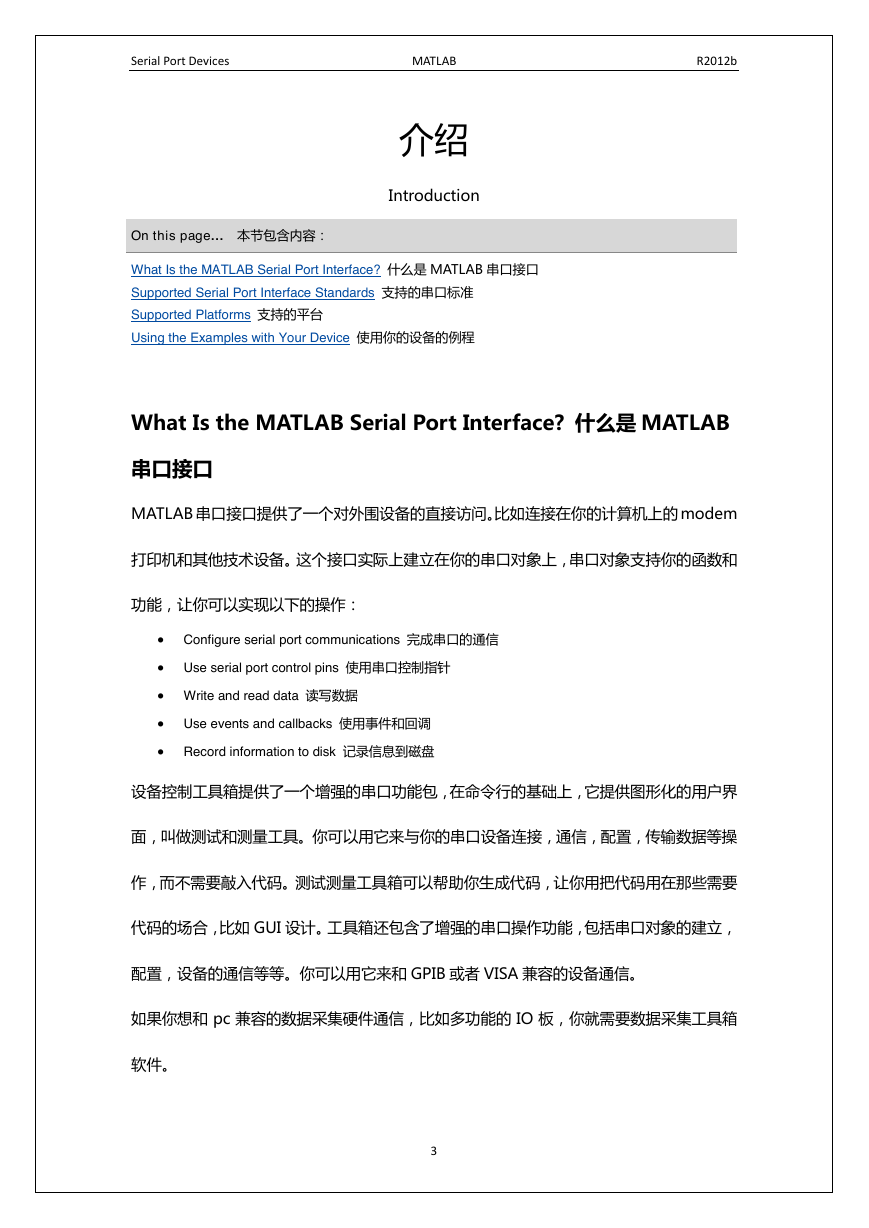

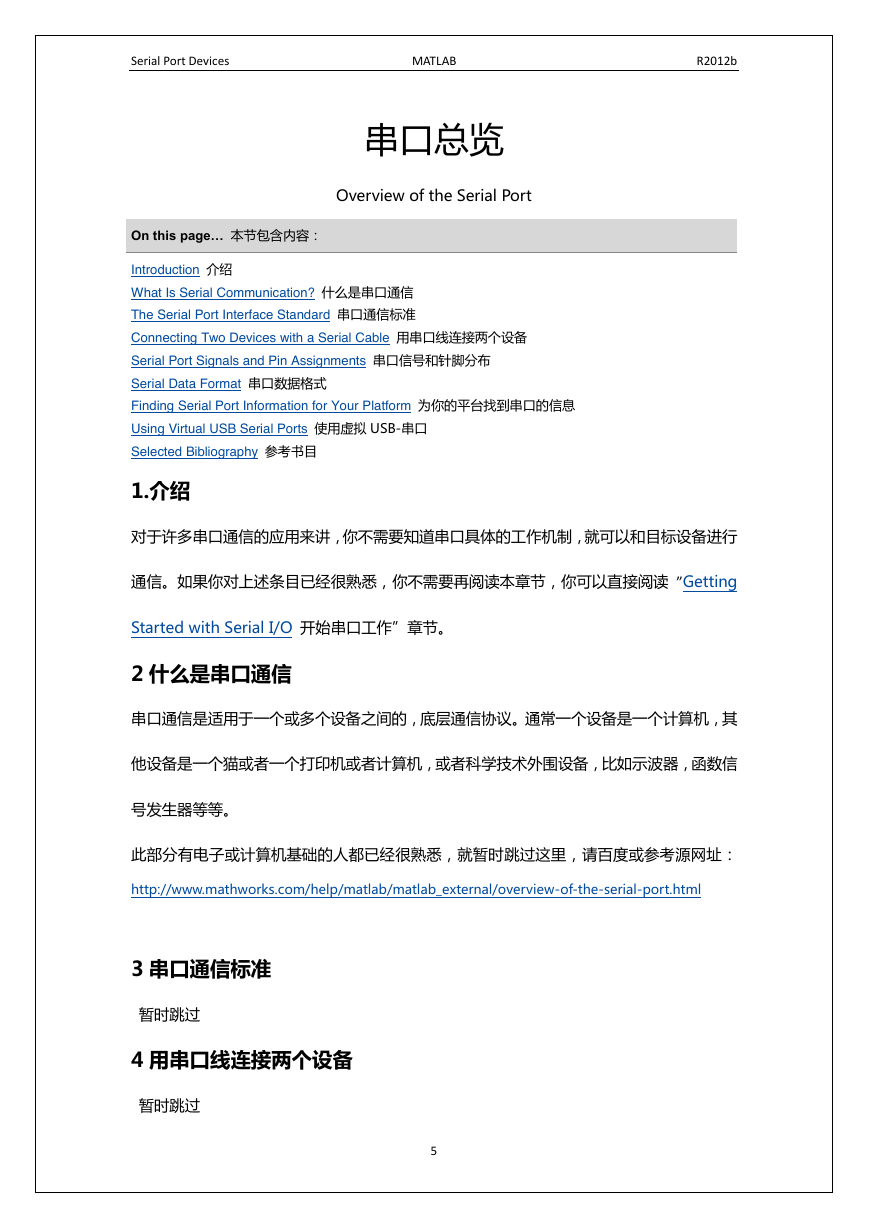

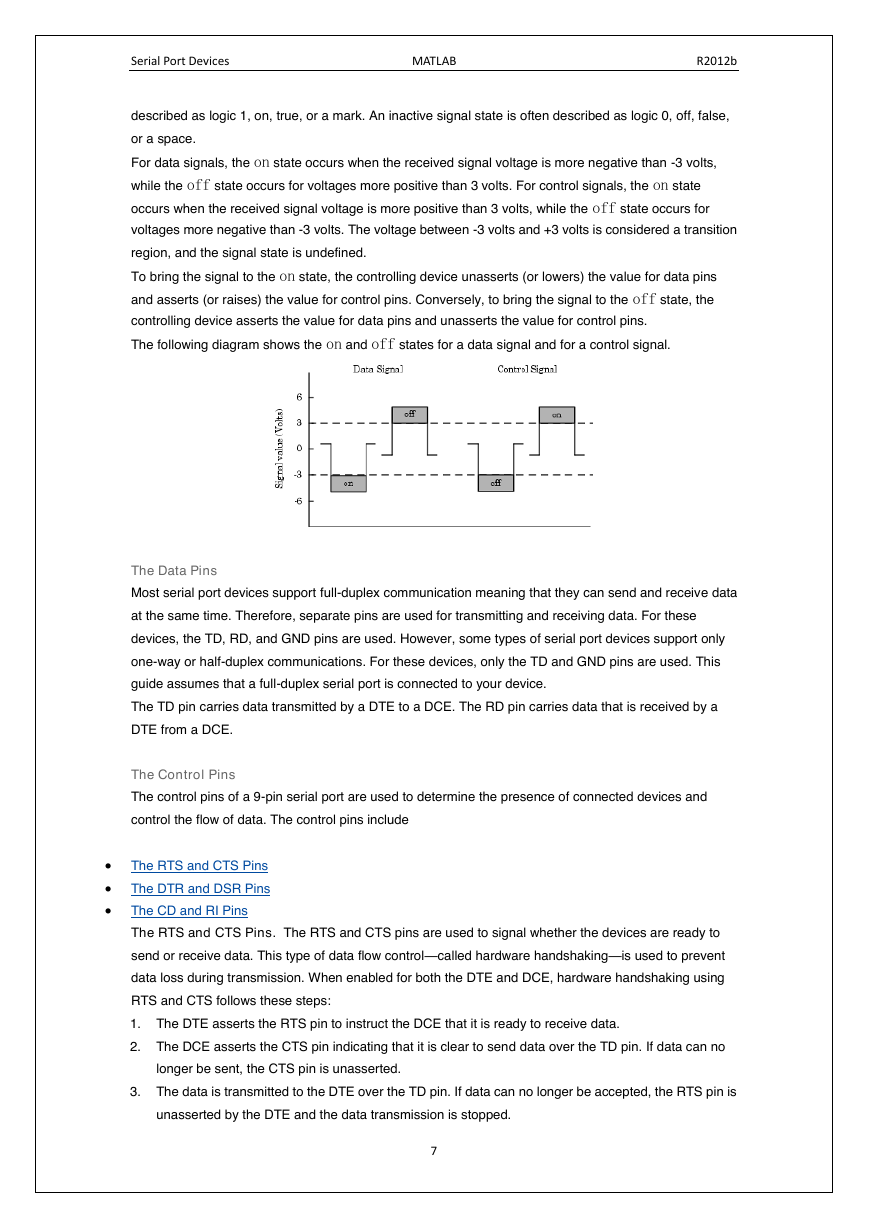








 2023年江西萍乡中考道德与法治真题及答案.doc
2023年江西萍乡中考道德与法治真题及答案.doc 2012年重庆南川中考生物真题及答案.doc
2012年重庆南川中考生物真题及答案.doc 2013年江西师范大学地理学综合及文艺理论基础考研真题.doc
2013年江西师范大学地理学综合及文艺理论基础考研真题.doc 2020年四川甘孜小升初语文真题及答案I卷.doc
2020年四川甘孜小升初语文真题及答案I卷.doc 2020年注册岩土工程师专业基础考试真题及答案.doc
2020年注册岩土工程师专业基础考试真题及答案.doc 2023-2024学年福建省厦门市九年级上学期数学月考试题及答案.doc
2023-2024学年福建省厦门市九年级上学期数学月考试题及答案.doc 2021-2022学年辽宁省沈阳市大东区九年级上学期语文期末试题及答案.doc
2021-2022学年辽宁省沈阳市大东区九年级上学期语文期末试题及答案.doc 2022-2023学年北京东城区初三第一学期物理期末试卷及答案.doc
2022-2023学年北京东城区初三第一学期物理期末试卷及答案.doc 2018上半年江西教师资格初中地理学科知识与教学能力真题及答案.doc
2018上半年江西教师资格初中地理学科知识与教学能力真题及答案.doc 2012年河北国家公务员申论考试真题及答案-省级.doc
2012年河北国家公务员申论考试真题及答案-省级.doc 2020-2021学年江苏省扬州市江都区邵樊片九年级上学期数学第一次质量检测试题及答案.doc
2020-2021学年江苏省扬州市江都区邵樊片九年级上学期数学第一次质量检测试题及答案.doc 2022下半年黑龙江教师资格证中学综合素质真题及答案.doc
2022下半年黑龙江教师资格证中学综合素质真题及答案.doc